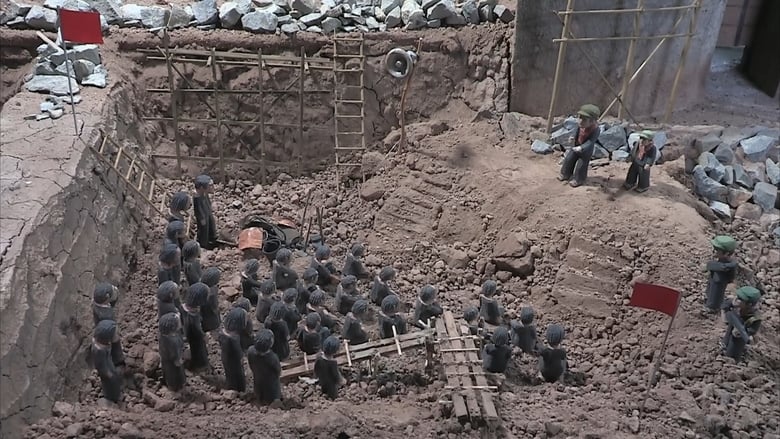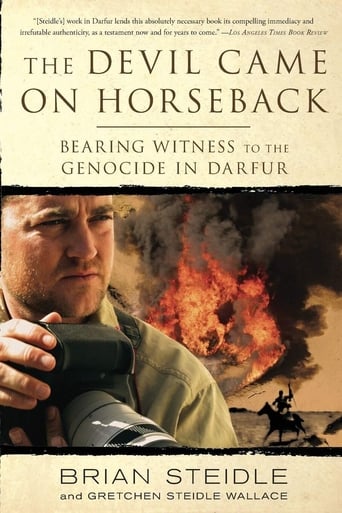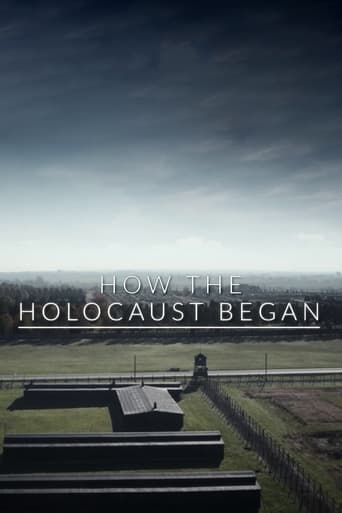

The Missing Picture (2013)
Rithy Panh uses clay figures, archival footage, and his narration to recreate the atrocities Cambodia's Khmer Rouge committed between 1975 and 1979.
Watch Trailer
Cast
Similar titles
Reviews
Touches You
Good story, Not enough for a whole film
A different way of telling a story
The film never slows down or bores, plunging from one harrowing sequence to the next.
"A picture can be stolen - a thought cannot" states the narrator of this documentary about the atrocities committed by Khmer Rouge in late 1970s Cambodia. While not actually narrated by him for reasons unknown, the script for the film is written by director Rithy Panh, a survivor of the atrocities, in an usual touch, Panh uses clay figures to depict incidents he experienced but for which no archive footage exists. Going back to that earlier quote, the film stands up as a testament of the human mind to recall personal horrors in great detail as one's thoughts can never be stolen. The clay figures are remarkably detailed and especially effective in a moment when Panh recalls drinking muddied water while watched by seemingly stunned local herds. Unique as the film may be though, it outstays its welcome long before it is over. The narration is extremely repetitive and as the film keeps focusing on emotions that its director personally felt, it crosses the border into maudlin territory while ultimately becoming less a document of the times and more the faded memories of a single man. The film is very deliberately paced too so one really needs to be in the right mood to appreciate it. The clay work is, however, never less than remarkable and as the film takes time to focus on Panh also creating all the models, sculpting then painting them, it is hard not to admire the care and consideration put into them. This was clearly a very personal film for Panh and the fact that the film makes one want to read up more about the Khmer Rouge horrors certainly says something.
"It's not a picture of loved ones i seek, i want to touch them, their voices are missing, so i wont tell. I want to leave it all, leave my language, my country in vain and my childhood returns. Now it's the boy who seeks me out, i see him, he wants to speak to me but words are hard to find." -Randal DoucI think i first heard of The Missing Picture more than a year ago when it premiered at Cannes and got out of there with the Un Certain Regard Award. The early buzz was good but the film did not stay with me and it was quickly forgotten until it's name came as a surprise in Academy Award Nominations that gave the film a nomination at the Best Foreign Picture. Then i check out the film again and realized that it had gotten great reviews overall and the film entered my watchlist but only seven months after that event was able actually able to see it. I was now still curious but not exactly excited to see it.The Missing Picture is Directed by Rithy Panh, "For many years, I have been looking for the missing picture: a photograph taken between 1975 and 1979 by the Khmer Rouge when they ruled over Cambodia. On its own, of course, an image cannot prove mass murder, but it gives us cause for thought, prompts us to meditate, to record History. I searched for it vainly in the archives, in old papers, in the country villages of Cambodia. Today I know: this image must be missing. I was not really looking for it; would it not be obscene and insignificant? So I created it. What I give you today is neither the picture nor the search for a unique image, but the picture of a quest: the quest that cinema allows."As said i was interested but not exactly excited to finally see this, i felt like it was more of an obligation since it had received great praise and even an Academy Award Nomination. Well i got to say that i'm a foll because i was completely overwhelmed by this film, it's a shame that it have only seen it now and a shame that most people have not yet seen and are likely to never see this wonderful little movie.It's funny because i had heard from the film for so long but i went in knowing absolutely nothing, i had no idea what it was about, i had heard that it was an unusual kind of documentary, but the film was not nominated for that category so i was a bit confused. The film is indeed a documentary that follows the life experience of a man who lived under the Khmer Rouge regime in Cambodia from 1975 to 1979. So after gaining independence and fighting the Vietnam War and a Civil War the Cambodian people went through a lot more they went through the Communist Regime, where the slogan are everyone is equal and those who complaint are enemies, where ignorance and hunger are kings. The Cambodian holocaust went through four years of enslavement and working fields that killed over 2.500.000. people. You probably didn't know that right? Me neither.The film certainly as a moving, touchy subject but only having an important subject doesn't make a good documentary, it's direction sure is important and here the direction is certainly unorthodox and the results are nothing short of outstanding. Documentary does feature live action images of the working fields but most of the film's narrative and storytelling is done through clay figures. Yes clay figures are used to dramatize the horrifying images that the director as a child saw and experienced. The results, are nothing of amazing, this could have gone real goofy, or maybe it would have been impossible to us audience to make a connection with the story if it's being told by clay figures but non of that is true. Weirdly or not we are able to connect and relate to the clay figures and the film is able to be emotionally wrecking and have an enormous deal of power even if through those little pieces.Never in a million years would i have thought that those little figures would have moved me in the way they did, they are quite disturbing too, the faces of the figures, very expressive at times it was like the fear, the hunger it became palpable, it's amazing. This is also due to the documentaries fantastic direction that reminded me of Hiroshima Mon Amour, it's poetic, breathtaking.The Missing Picture is an amazingly underseen picture, last years best documentary(yes better than The Act of Killing) and by the way why was this not nominated for that category. Well continuing...if you have the chance see it and you won't be disappointed, it's emotionally shattering, it's unusual, innovative, poignant and overall an extremely well made documentary that is among last years best.Rating: A-
History, it is said, is written by the victors. But sometimes, it is the victims - or more accurately, the survivors - who get to do the writing. That is the case with Rithy Panh, a Cambodian who survived the horrors of life under the Khmer Rouge in the 1970s. Panh was a mere child when he suffered the loss of his parents and siblings in the various grueling work camps to which they had been consigned. As an adult, Panh went on to become a documentary filmmaker dedicated to telling his story to the world. It was a purge aimed mainly at the intelligentsia of Cambodian society - the well-off and educated - who posed the greatest threat to the regime's vision of a collectivist agrarian utopia.Where, Panh asks, are all the pictures of children starving, of people being worked into the grave that more accurately portray the reality of this 20th Century holocaust? Somehow, those were not recorded and preserved for posterity. Instead, we get a series of grainy propaganda images - of workers seemingly happy in their toil, of leaders of the revolution inspiring the masses with their promises of a Communist paradise - that were officially sanctioned by the government. So Panh has taken it upon himself to provide the "missing" pictures the Pol Pot regime failed to provide to the world. The Oscar-nominated documentary "The Missing Picture" is a stark, haunting illustration of what life was like under Pol Pot's brutal dictatorship. The director alternates between grainy, mostly black-and- white footage taken at the time and diorama-style re-creations using strategically arranged and intricately carved clay figurines. These frozen, expressionless figures, with their searching, unblinking eyes, lift the suffering that the actual people endured to a near-surreal level, while the wistful, soft-spoken narration by Jean-Baptiste Phou echoes the human tragedy at the core. Indeed, the approach Panh has taken manages to personalize a holocaust that, given its enormous breadth and scope - an estimated one to three million people died under the regime - would otherwise be incomprehensible to the human mind. "The Missing Picture," by "going small," paradoxically helps us to see the tragedy writ large.
Philosopher Albert Camus said, "Good intentions may do as much harm as malevolence if they lack understanding." Indeed, we have seen many examples in history of how ideology, no matter how well intentioned, can lead to disastrous consequences if not tempered with compassion and respect for the rights of the individual. We saw it in Nazi Germany and in the Soviet Union during the Stalin era. There is no more blatant example of the distorted use of ideology than in the 1975 takeover of Cambodia (renamed as the Democratic Republic of Kampuchea) by the Khmer Rouge under the leadership of Pol Pot (aka Saloth Sar).While the goal of the Khmer Rouge was to promote an agrarian socialist economy and eradicate any remaining traces of individuality, their process of forced labor and communal living led to the death of millions of people and when they fled in 1979, they left behind a trail of tears. Only thirteen-years-old at the time, Director Rithy Panh, lost his entire family in Cambodia during those years and has documented his experience in The Missing Picture, winner of the Un Certain Regard award at the 2013 Cannes Film Festival. It is a deeply moving film that uses hand-carved clay figures sculpted by Sarith Mang together with archival news footage and propaganda films used by the Khmer Rouge to paint an overwhelming picture of man's inhumanity to man.Although the sadness etched on the faces of the painted clay figures moving on doll-house sets are somewhat distancing and can only give us a vague idea of the amount of suffering that took place, Panh's affectingly poetic voice-over helps us to bridge that gap by offering the perspective of one who lived through those years. In their four years in control of Cambodia, the Khmer Rouge destroyed food sources outside of centralized control, forbade fishing and the planting of mountain rice, abolished medicine and hospitals, and refused offers of humanitarian aid. Now 50, Panh says that making the film has helped him to come to terms with his memories, reflecting that, "in the middle of life, childhood returns—sweet and bitter." While the film's historical perspective is limited, it gives us a sense of the vibrant life of Phnom Penh before the Khmer Rouge arrived to evacuate the city, uprooting and exiling millions of families to re-educate them in labor camps. Those not needed were told, "To keep you is no benefit, to destroy you is no loss." Those forced to leave were told that the evacuation was meant to protect them from American bombs and they would be able to return to their homes in a few days. Panh refers to the U.S. bombing of Cambodia during the Vietnam War as a factor that persuaded Cambodians to look for an alternative to their current political system but he does not attempt in any way to justify the actions of Pol Pot.The Missing Picture, while grim and perhaps repetitive, is a powerful prayer that no child ever has to again witness what Panh saw: his family forced from a home filled with music and literature, his father going on a hunger strike and dying from starvation and illness; the execution of children who were forced to denounce their parents; sitting on the cold ground night after night watching propaganda films displaying happy faces while outside thousands starved. Under the leadership of Pol Pot, an estimated 2.2 million people died from execution, illness, or starvation, a tragedy that left a legacy of suffering that continues until the present day. Miraculously, Panh survived to tell his story and in The Missing Picture, has left us a testament of unbounded courage.





